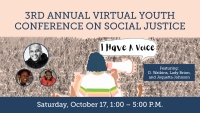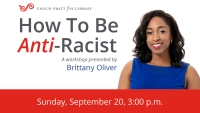Community and Customer Equity Lens
Enoch Pratt Free Library, Md.
Innovation Synopsis
We are developing equity tools so that programs and services are better reflective of community and customer interests. These tools will be used to determine the effectiveness of programs and services that challenge the status quo and will be applied to EPFL organizational decision-making concerning development of and access to learning materials, programs and services.
Challenge/Opportunity
We are looking to expand our footprint within and beyond current customers by equitably determining needs and interests driven by data and evaluating current programs and services so as to dismantle equity barriers and disproportionately negative impacts on marginalized communities. Our focus is systemic impact on communities and how to better serve patrons in increasingly complicated and challenging environments. New tools are demographic profiles for every neighborhood branch and tailored equity surveys for employees, community partners and customers.
Key Elements of Innovation
The seven areas of concentration for equity evaluations are: outreach, partnerships, success measures, community responsive programming, culturally responsive programming, culturally welcoming environment and evaluations. These seven areas will inform our best practices. EPFL will measure the effectiveness of programming in the following areas: literacy, STEM, arts and culture, health and wellness, peace and community-building and workforce development.
Achieved Outcomes
Success will be measured by development of neighborhood branch action plans utilizing a racial equity lens and pre-/post-employee, community partner and customer surveys which will all serve to inform mitigating actions needed to support and foster a racially equitable ”lens” to be applied to the Pratt’s policies, programs, services and organizational decision-making. Equity and survey outcomes will dictate the type of intervention that will be required.


